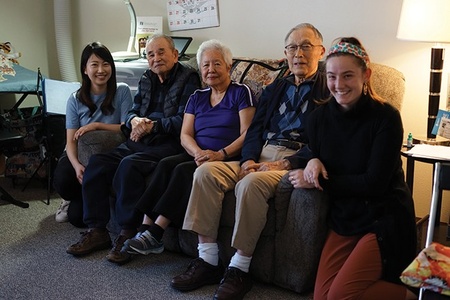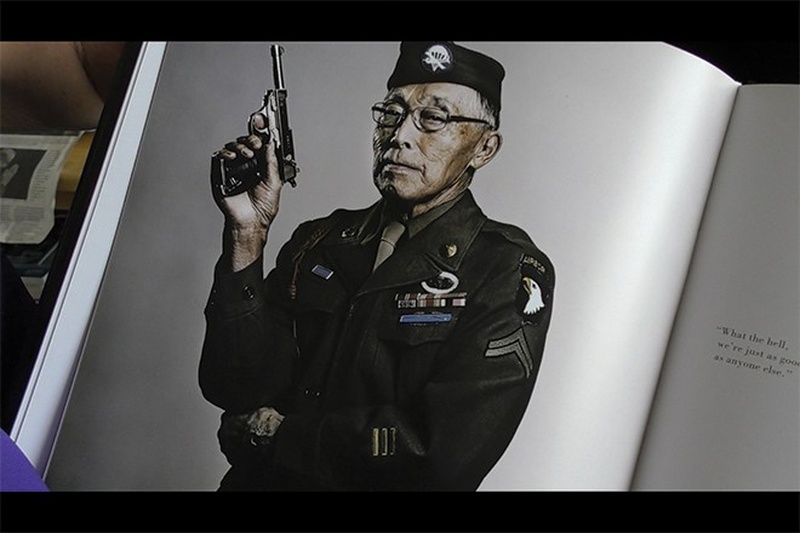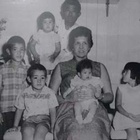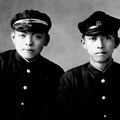"Are you guys listening to something from 70 years ago?"
Toshi's first response was with a laugh. Could this really be the man who fought in the fierce battles of Europe as a US soldier 70 years ago? It was hard to imagine, judging from his smile.
Toshi Tokunaga (93), who lived in the Minidoka internment camp in Idaho during World War II and later enlisted in the U.S. Army and went to the European front, now lives quietly with his wife, Dolly, in Nikkei Manor, a nursing home for Japanese immigrants. On the walls of his room are lined with family photos and medals and other items awarded to veterans.
Toshio Tokunaga is from Selleck, Washington. Toshi is his nickname. His parents were first-generation Japanese immigrants who came to Seattle from Ehime Prefecture, and when World War II began, the family was sent to the Minidoka internment camp along with other Japanese people. Toshi was 17 years old at the time.
After graduating from high school in the camp, Uncle Sam called me to join the 442nd Combat Team, which was made up of young second-generation Japanese-Americans. I had no choice but to join. "I felt like I was going on an adventure, but I had no idea what to do next."
Toshi was first sent to a base in Mississippi for basic training, and after completing all of that training, he was told to join the 507th Combat Team, which specialized in parachuting, unlike the other Nisei Japanese-Americans in the 442nd.
He then received specialized parachute training at a base in Georgia before traveling to Europe on the Queen Elizabeth ship, landing in Scotland and then being shipped to France, where he received more difficult parachute training, before parachuting into Germany and taking part in the fighting on the Rhine.
After leaving the military, Toshi returned home aboard the "Victory Ship." The ship docked in New York. As soon as he arrived, he ran to the side of the ship to look for his family, but he still hadn't been told where his parents were. It wasn't until he returned to Seattle that he found out where his family was. He went to the Seattle Japanese Baptist Church and asked for his family's address.
After the war, Tosi said that when he attended a veterans' ceremony, most of the veterans there were white. Unlike the 442nd, the 507th Combat Team, which specialized in parachuting, was mostly white, so Tosi, who is Japanese-American, was a minority. The participants at the ceremony did not know that Tosi had been drafted from the internment camp, but when they learned this at the ceremony, everyone there gave him a standing ovation in honor of his death.
Most of the young men who enlisted as second-generation Japanese-Americans and were sent to the battlefields did not return alive. "It's amazing that we're still alive today," said Toshi's niece, who was present at the interview. Toshi laughed again and said, "It was a long time ago, so I don't really care that I survived."
At the end of the interview, I walked over to Toshi and shook his hand. As I held his warm hand, a variety of emotions welled up inside me. I wondered just how many horrors this man must have experienced. I felt gratitude for him for raising the social status of Japanese immigrants as a Japanese-American soldier who is celebrated as a hero in American society. And, as someone with the same roots in Japan, I felt encouraged by his courageous actions.
And lastly, I felt their strength in being able to look back on their painful history despite having experienced various discrimination and hardships. For Japanese immigrants, such life history is only a part of them, not everything. I think that is the strength of Japanese immigrants who overcame discrimination and war in a foreign land, and it is the foundation of the current Japanese community in Seattle. What a precious time it was to be able to talk face to face in the same space as people who have that strength.

*This article is reprinted from the North American Newspaper (August 2, 2018).
© 2018 Minami Hasegawa / The North American post







